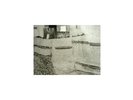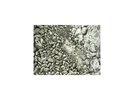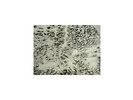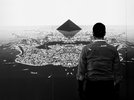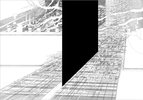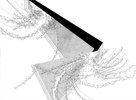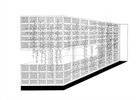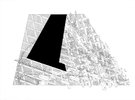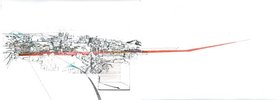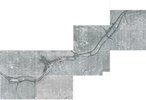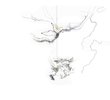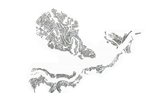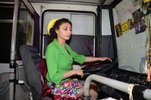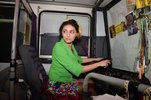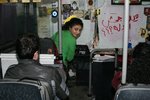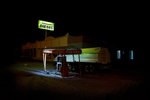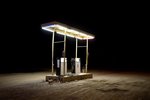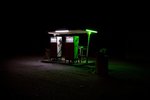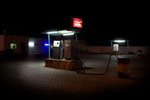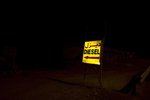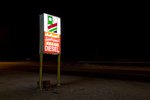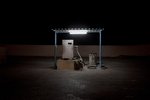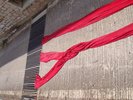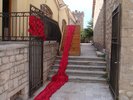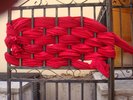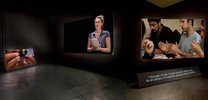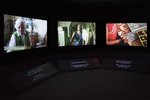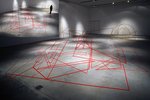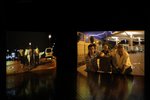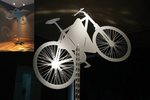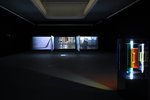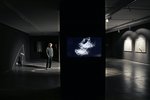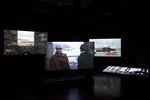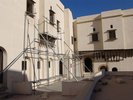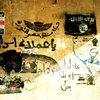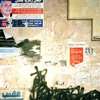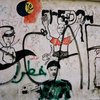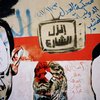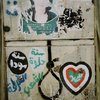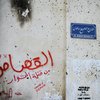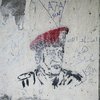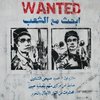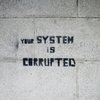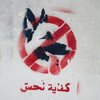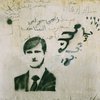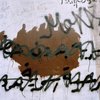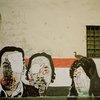Platform for discussion 003
Can Artistic Practices Negotiate the Demands of Cultural Institutions, Public Space, and Civil Society?
Essays
-
Archives, Museums and Collecting Practices in the Modern Arab World19 August 2012
An Introduction
Sonja Mejcher-Atassi and John Pedro Schwartz
-
In the Event of Fire13 July 2012
Precarious Images, the Aesthetics of Conflict, and the Future of an Anachronism
Anthony Downey
-
Productive Contexts and Contemporary Restraints2 May 2012
The Practice of Contemporary Art in Algeria Today
Alice Planel
-
Fast Forward to the Past2 May 2012
Cultural Institutions, Urban Development, and Regional Cinema in the Gulf Today
Sheyma Buali
-
The Urban Observatory of Beirut2 May 2012
For a Polysemic Reading of Both City and Territory
Caecilia Pieri
Interviews
-
An Accidental Orientalist27 September 2012
Tom Bogaert in conversation with Anthony Downey
Anthony Downey
-
Absorbing Displacement27 September 2012
Bouchra Khalili in Conversation with Dorothea Schoene
Dorothea Schoene
-
An Architecture of Apprehension27 September 2012
Timo Nasseri in conversation with Laura Allsop
Laura Allsop
-
Auto-Connections26 July 2012
UBIK in conversation with Isabella Ellaheh Hughes
Isabella Ellaheh Hughes
-
Restaging Invisibilities26 July 2012
Fayçal Baghriche in conversation with Laura Allsop
Laura Allsop
-
‘If Walls Could Talk ...’ 24 May 2012
Driss Ouadahi in conversation with Rachida Triki
Rachida Triki
-
Colourful Shadows and Reel Journeys2 May 2012
Tarzan and Arab in conversation with Laura Allsop
Laura Allsop
-
The Shortest Length Between Two Points2 May 2012
Slavs and Tatars in conversation with Franz Thalmair
Franz Thalmair
-
What Was Lost2 May 2012
Joana Hadjithomas and Khalil Joreige in conversation with Nat Muller
Nat Muller
Projects
-
Culture In Defiance
Continuing Traditions of Satire, Art and the Struggle for Freedom in Syria
Amira Gad
-
The Missing Link 3
A Mother's Tongue, On Ahmad Ghossein's film My Father is Still a Communist
Marwa Arsanios
Responses
The two-year-old MASS Alexandria, founded by artist Wael Shawky in the working-class neighbourhood of Miami in east Alexandria, Egypt, aims to create a space for the production and dissemination of ideas and debates concerning contemporary visual culture. Apart from displaying and encouraging the consumption of art through exhibitions, it creates an open platform and a discursive space for encountering, (con)testing, and contributing to ideas in and around the practice of contemporary visual art and interdisciplinary studies. MASS Alexandria is a seven-month-long programme for artists in Egypt, which provides studio spaces and a study programme comprising discussions, workshops, seminars and reading groups delivered by visiting artists, curators and art educators based in Egypt and across the globe. Artists are invited to participate in the programme through an open call and as well as being provided with a studio space, take part in a study programme and receive mentoring by leading artists and curators. They also show their work in a group exhibition at the end of the programme. The discursive, open-ended and participatory programme is committed primarily to fostering critical engagement and creating a space for new ideas and approaches.
When Umru' al-Qais stood by the traces of the tent of his beloved in the middle of the desert of Hijaz, he shed tears that became the key to Arab poetry. Until recently, no one could have guessed that those tents would one day be made of concrete. These days,...
Dictaphone Group is a collaboration between performance artist Tania El Khoury and urban researcher architect Abir Saksouk-Sasso, whose aim is to research specific urban spaces in Lebanon. Issues of public space and public amenities, or indeed the lack thereof in Beirut, come to the fore in Bus Cemetery, a sound-based...
There is no doubt that artists are addressing this question and its associated issues in their work, as anywhere in the world. However the region comprises so many different descriptions of civil society; the politics and economics of one country enable while those in another disable. Volatility can be a positive signal of change or a characteristic of uncertainty and ultimately stasis.
Cultural institutions, governmental and independent, have a responsibility to act as positive agents of activity and debate. How they play a strategic role is recognised both contemporaneously and of course with hindsight. Therefore, lacking in strategic purpose could be said to be a dereliction of duty. Yet to what purpose?
The best cultural institutions offer ways in which a particular society can know itself, look at itself and question or appreciate itself (often in relation to elsewhere). The MENA region has significant examples. Yet as there are disparities in capacity, there is disparity in terms of who some institutions and new initiatives are for. Who is benefitting? How are they contributing to society?
The MENA region, vast as it is, is no different to other parts of the world. Yet it has the opportunity to be different in how it responds.
Dar al-Ma'mûn is a new arts centre and residency for artists and translators outside of Marrakech. The questions of public space and of civil society have been with us since the beginning, as we were trying to avoid creating a mere retreat for artists, a luxurious ivory tower for intellectuals in the middle of nowhere – precisely because the countryside is not 'nowhere'. We have neighbours, who were there before us – it's a quiet, though lively village, behind which lie more villages. A lot of the adults there are illiterate. Their children, though, go to school, to an elementary school in the village, and a middle school a few miles away.
As a budding institution, our impulse in order to 'bridge the gap' was to establish a children's library and a whole range of free educational projects: reading and writing workshops, literacy classes, a pre-school programme and film screenings. These initiatives have been fascinating and successful and enriching for all involved, but they have not veered much from the provider/receiver model.
Cultural institutions in Turkey are divided into those run by the state, local governments and private sectors; each have different culture policies and no significant collaborative policies. Contemporary art productions and practices are based in Istanbul and are dependent on private sector investments, rather than official funds. Compared to the EU culture system, the current relations between the producers (artists, art experts) and consumers (public, collectors) are still sporadic and unsustainable.
Political environments in most of the countries in the MENA are still authoritative and semi-democratic, in which art practices serve as activism or protest against human rights violations and restrictions of freedom of expression, among other things, albeit with limited influence in changing the convictions and attitudes of the public. Visual arts are almost the only channel through which creative people can convey their free and critical thinking to their societies and to the world. If the artists are represented in international exhibitions they have more prestige, confidence and power of persuasion in their local communities.
Wthin the neo-capitalist system, the monopoly of corporate culture is not to be avoided! Commercialisation of culture is growing rapidly and the market system norms and requirements force art practices to act accordingly. The distribution of visual production is manipulated by corporate institutions, foundations and art fair companies to their benefits. Yet, there is no other possibility of funding visual arts in the MENA region and even in Turkey, a country with a strong official modernist culture infrastructure and local government public culture institutions. In these regions, contemporary art infrastructures are still to be developed; the existing individual initiatives that practice and produce contemporary art are fragile and unsustainable. Art market prospects are still developing; galleries have financial difficulties to lift up the artists to international platforms.
'The young conservatives embrace the fundamental experience of aesthetic modernity – the disclosure of a de-centered subjectivity, freed from all constraints of rational cognition and purposiveness, from all imperatives of labour and utility – and in this way break out of the modern world. They transpose the spontaneous power of imagination, the experience of the self and affectivity into the remote and the archaic; and in Manichean fashion, they counter-pose to instrumental reason a principle only accessible via "evocation": be it the will to power or sovereignty, Being or the Dionysian power of the poetic'.
Jürgen Habermas
A friend recently asked me, what would be my dream cultural/art space in Ramallah?
In the midst of rapid urban construction in Ramallah, my impulse is not to build another building but create what is lacking – an open public space. I feel this would be an artistic, political and cultural intervention against the current tides.
For the longest time, I have been complaining about the lack of properly equipped exhibition spaces in Palestine. And yes, I thought the lack of such a space was holding Palestinian art back, preventing artists from really communicating with the public. I longed for funding for Palestinian art that would be motivated by 'art for art's sake'.
The lack of this Super Duper Art Space has forced me to negotiate my work and role as an artist in society constantly. In Palestine, art has always been asked to visualise national identity, preserve cultural heritage, call for humane treatment, indicate civilisation, democratise society – and so on.
Can or should or will? Everything is possible, while a lot less is likely. These to me are three discrete topics: the health of institutions; public space (itself a maligned, misused term, most of the time); and civil society. I think if artists – or curators, or any agent involved in the arts – had to take all of this on, I wouldn't blame them for conducting an endless Bed-In (with or without Yoko Ono. Or her authorisation). I'd have to plea for specificity in the question being asked. It is the only way to avoid (glib) overarching answers that at their worst mimic (glib) overarching art produced cynically and opportunistically In the Name of MENA. Has anyone opened an espionage agency called MENA yet? They should! Seriously, though (or, still): my honest answer is, 'I don't know', and I would be worried by – and deeply suspicious of – anyone that claimed they did know the answer to this riddle. With acuity like that, I would swiftly make such a bright spark head of MENA (covertly, of course) and solve some of the more pressing problems in the world. Like Bieber Fever. Or economic polarisation.
I will limit myself to tackling the situation from the point of view of the ‘common ground’, which is lost or has never been found. There is a wide gap between art practice on one side and the institutions on the other; the first doing the minimum in terms of...
Street art in Tunisia has appeared more and more since the early days of the 'revolution'. But this phenomenon was already there long before events took place. Certain activists – artists working in graphic and visual communication – invaded public spaces to express their grievances. They no longer wanted to express themselves on the walls of private or official galleries but definitively off the walls. Galleries are, in the eyes of these young people, linked to the world of economics, to the world of outdated capitalist exploitation.
The classic fine arts do not constitute an exclusive genre in themselves. New artistic practices have appeared. Their references are varied and their modes of expression are often improvised. Certain artists form groups, others act individually and informally. Some are revolutionary and want to bring art to the people by any means possible, even by provocation. Others are conservative and want to maintain a link with 'grand' art. The two approaches come together to make the street a space for art.
Since the 25th of January 2011, a traditional arts programming model has become functionally irrelevant in Egypt. In this context of conflict and change, diverse publics have asked to use Townhouse's spaces in ways that extend far beyond the scope of visual arts exhibitions. Consequently, over the past year, we have focused on initiating and supporting projects that respond to these calls for a critical space for reflection, discussion, and engagement with contemporary social issues.
We remain committed to our mandate of supporting local and regional contemporary arts, but have adopted a flexible, highly responsive curatorial programme that lets us respond to current events. In terms of exhibitions, this has meant opening our spaces to often participatory experiments that do not centre around art objects but rather invite discussion on topical issues – as with The Politics of Representation, an attempt to create a living archive of printed ephemera from Egypt's parliamentary elections that was housed in our first-floor gallery space. Townhouse has also launched initiatives like 'The Workshop Series', a programme of four nine-month long seminars that focus on human rights and social justice, while asking how arts and culture can positively engage in contemporary socio-political issues.
News from the Arab World reaches western audiences on a daily basis. The various analogue and online formats of media – TV, radio, newspapers, and blogs – are extensively reporting on the events in this region. In Berlin, and certainly elsewhere in Europe, cultural institutions and festivals reacted very quickly to, and reported on developments by inviting artists from the MENA region to present their performances, films, and theatre pieces. Western cultural producers thus became allies of the revolutionaries.
The panel discussion 'Cairo: The City, the images, the archives' with Khalid Abdalla, Hala Galal, Maha Maamoun and Sarah Rifky, in the framework of the 62nd Berlinale Film Festival, provides just one example of the many festivals and events exploring such a topic. It revealed a diversity of reactions by cultural producers in Egypt and effectively contextualised the situation there. Khalid Abdalla, one of the co-founders of the alternative media collective Mosireen, presented the motivation and the main intention of the group and showed the most important work of the group so far, namely, The Diary of the Revolution, an impressive documentary of the events in Egypt filmed by its citizens.
Yes, artistic practices can offer insights into those things – but need they? Many artists in the region deftly wield smart institutional critique without breaking a sweat. But why not pass that responsibility to the audiences for their work? I think the best way to develop civil society is not to demand that artists engage with civics but to support artists' experiments in all forms.
Of course this implies the need for a non-commercial culture or one in which commercial success is an option, not a criterion. Many institutions in the region are providing forums for experimentation, free inquiry, and spontaneous responses to events. Townhouse in Cairo, Zico House in Beirut, L'Appartement 22 in Rabat, and Traffic in Dubai are just a few that come to mind.
One major obstacle for a diverse art scene in a country or region is the lack of artistic infrastructure with institutions that offer support for artistic research and the production of independent, non-market-related work. During the past decade, most countries in the MENA region have seen the establishment of independent, non-governmental institutions and a wide range of projects that have enabled local artists to pursue their artistic interests. Yet, much still remains to be done as some countries (such as Syria) still show a dramatic lack of such structures. And many institutions still depend largely on foreign funding from western partners who often follow agendas related to the foreign policy of their home countries. This again influences the thematic scope of the projects these institutions fund.
As a politically engaged artist, I have to believe that artistic practices do have the potential to offer insights and negotiate anything from the demands of cultural institutions to politics and the ideals of civil society. Without such a belief, the entire foundation of what I do would be rattled. In each case, however, it is a tug-and-pull relation. It would, for instance, be naive to think that artistic practices themselves are not influenced by cultural institutions – either by being limited by them or acting in defiance of them. Artists are often driven by an urge to defy the restrictions, standards and politics of cultural institutions, and the resulting artistic gestures will eventually be submitted to a hopefully re-negotiated version of the institutions rebelled against, if you will.
'What do we do when as artists we are invited to behave as liberal democratic [beings]? You have your own space, each has their own little house, we can all live together; does this not sound like the idea of a Lebanon of all the different mosaics and cohabitation - the cohabitation that failed us during the war?' (Ziad Abillama, Beirut, June 17, 2009)
In 1995, a young artist staged a disruption within what was already perceived as a disruption of young contemporary artists probing the notion of 'public' space in post-Civil War Beirut. For a group art show, participating artists were each allotted a space within a small park to exhibit their work by a newly formed, non-profit arts organisation. As part of his contribution to the show, the artist provoked his colleagues by handing out a questionnaire asking each if they would allow him to sequester 30 centimetres of each of their allocated spaces. The artist proposed that he would exhibit what he wanted in the space granted to him by his fellow participants as long as he complied with the agreement he made with them regarding the reallocation. His request was unanimously refused.
I am broadly interested in addressing the recontextualisation of cultural heritage in the MENA region by institutions, thus aligning it in the process with current developments in contemporary art at large. Artistic practices are frequently used to measure the economic and cultural growth of geographies. This is often achieved by...
Artistic practices can offer many insights, but it is important to remember that when art’s role is reduced to a tool for social development or economic prospects, it ceases to be art. Rather than provide a broad qualification of the use value of art in the world, it can be more interesting to consider how artistic practices must necessarily exceed and fall short of providing any direct contribution to civil society, whether political, democratic, economic, or whatever.
A recent project led by Walid Raad attempted to draw attention to, and improve the treatment of, migrant workers on Saadiyat Island by Guggenheim and its Abu Dhabi partner, the Tourism Development and Investment Company (TDIC). Tactics were initially conducted privately but when it was clear to those involved that changes were not being made, Raad, along with a slew of prominent artists from the Middle East and beyond launched a public letter calling for a boycott of the Guggenheim until the labour practices are resolved.
In this instance, political action cannot be divorced from artistic practice; by escalating the protest to the public domain, the project operates at the register of performance replete with public audience and set on an international stage. Although it is unclear what the effects will be and whether labour practices will shift sufficiently to satisfy the petitioners, the action opens up the potential for change, and creates an alternate avenue for showcasing art and art history.
The question implies a view on artistic practice informed by a liberal framework of reception and interpretation: artistic practices are expected to politely negotiate within and with the larger sphere of culture; they are expected to expose, reveal, unmask, reform and finally find a place within various institutional configurations. The question proposes cultural politics wherein the formal, conceptual and sensorial impact of art works is reduced to being instrumentalised either for institutional critique or political contestation in the name of democracy and civil society. In its stead, I would like to reverse and paraphrase the question: ‘Can cultural institutions, public spaces and various ideals of civil society negotiate the demands of artistic practices in the MENA region?’
How artistic practices define and negotiate public space is to me the most significant issue in the question posed, which I will begin to discuss in the context of Algiers. The site specific practice of Amina Menia testifies to both the richness of meaning and difficulties of execution endemic to...
The MENA region is not short of attempts by cultural practitioners to interrogate, negotiate and redefine 'the public' (as manifested in the form of an institution, a public space, an audience, or the essentials of civil society). Some of most potent images of events over the last year in the Arab world have been those of graffiti artists/activists, cartoonists and caricaturists that have not only communicated demands and frustrations at the street level in the most immediate way, but have also caught the world's attention and transformed how the region is viewed. The forthcoming 4th Riwaq Biennale in Palestine and Tunisia's second Dream City project, run by artists and activists, also attempt to re-imagine possibilities about how society engages with politics and place. The list of examples goes on.
What is a platform?
A platform is a space for speaking in public. It is an opportunity to express ideas and thoughts. It also suggests the formal declaration of a stance or position on any given subject.
Unique to Ibraaz is a 'platform', a question put to writers, thinkers and artists about an issue relevant to the MENA region. This platform is sent to respondents both within and beyond the MENA region and contributions will be archived every 12 months.












































